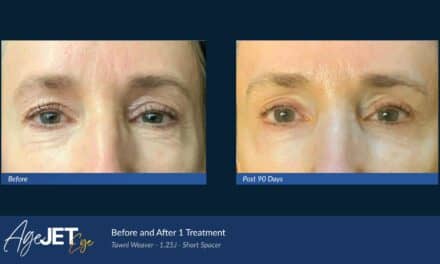Fat transfers are among the phattest cosmetic surgery trends in the UK, according to the newest statistics from the British Association of Aesthetic Plastic Surgeons.
![]() In 2012, women had more fat-injecting than fat-removal procedures for the first time with 2,641 fat transfer procedures compared with 2,638 liposuction operations.
In 2012, women had more fat-injecting than fat-removal procedures for the first time with 2,641 fat transfer procedures compared with 2,638 liposuction operations.
Other procedures that experienced double-digit rises in the UK in 2012 included eyelid surgery, brow, and facelifts. The most impressive percentage increase was in male browlifts, which jumped by 19%. Eyelid surgery and fat transfer rose by 13%, and facelifts were up by 14 % in 2012, compared to 2011. By contrast, abdominoplasty and liposuction fell by 12% and 14%, respectively, the new data show.
In the backdrop, and possibly driving some of these trends, is the ongoing PIP breast implant crisis in the UK. For example, demand for breast augmentation dropped by 1.6%. Despite the climate, breast augmentation continued its reign as the No.1 procedure among Britons. As many as 300,000 women in 65 countries may have Poly Implant Prostheses (PIP) breast implants, which were manufactured with industrial silicone and have a higher than acceptable rate of rupture.
Overall, 43,172 surgical procedures were carried out by BAAPS members in 2012, a 0.2% increase from 2011, when 43,069 were performed. Of these, women had 39,070 procedures, up from 38,771 — just a slight rise of about 1%. The most popular procedures for men were nose jobs, eyelid surgery, and breast reduction. Male surgery overall fell by 4.5%, from 4,298 ops performed in 2011 to 4,102 in 2012, but men still account for roughly one in ten of all cosmetic surgery patients.
“The growth rates for surgical facelifting and other anti-aging procedures showed a double-digit rise, despite a double-dip recession,” says BAAPS President Rajiv Grover, in a news release. “Perhaps because of turbulent financial times, patients are looking for tried-and-tested procedures that deliver a reliable, long-lasting result and which have a proven safety record.”
According to Grover, “The considerable drop in body-shaping procedures, such as liposuction and tummy tucks, may well be due to people choosing to head back to the gym (perhaps inspired by an unforgettable summer of Olympic golds!) or the fact that there are now many less-invasive options to target problem areas, such as for gynecomastia.”
[Source: BAAPS]



